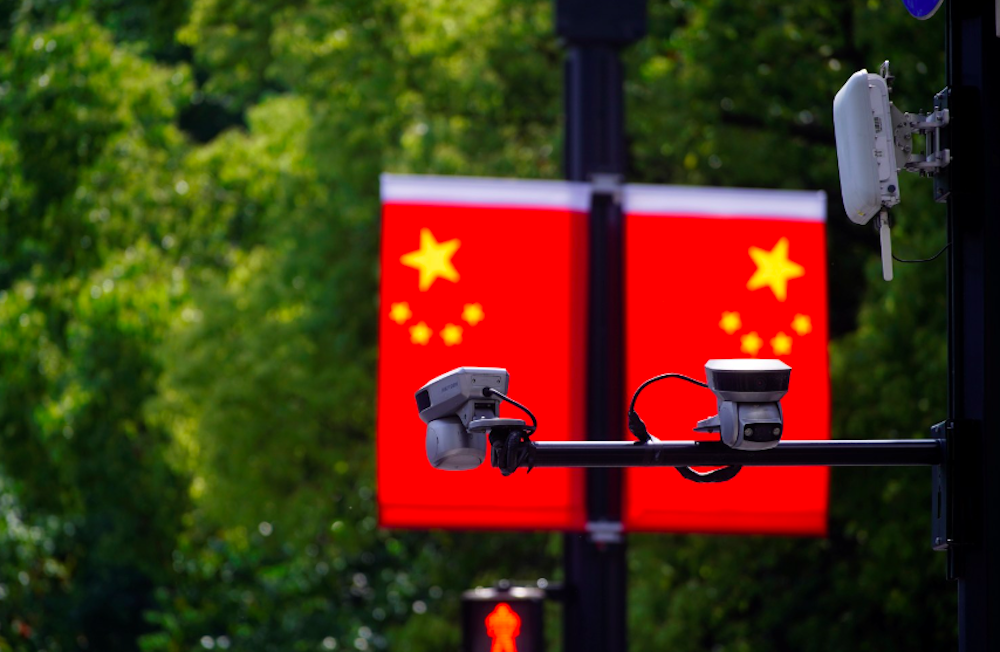By Tenzin Nyidon
DHARAMSHALA, Feb. 14: A new report by a network of Tibetan researchers titled, “Weaponising Big Data: Decoding China’s Digital Surveillance in Tibet” has uncovered concerning the development of China’s digital surveillance apparatus in Tibet. The report from Turquoise Roof and Tibet Watch reveal alarming state diktats like the installations of ‘National Anti-Fraud Centre’ app on smartphones, initially purported to combat fraud, as part of a broader system of surveillance.
The findings revealed the alarming extent to which the app is intertwined with broader surveillance and control mechanisms operated by the Chinese government in Tibet. The dynamic analysis of both the Android and Windows Desktop versions of the app highlighted that the data collected extends far beyond its purported purpose of internet fraud detection. By integrating with databases managed by the Criminal Investigation Bureau, the app becomes a tool not just for detecting fraud but also for facilitating broader surveillance and oversight activities.
The ‘Tibet Underworld Criminal Integrated Intelligence Application Platform’ described in the report appears to be a tool for law enforcement in the so called Tibetan Autonomous Region (TAR). Through an analysis of government procurement notices, it was uncovered that this system consolidates data from multiple existing Public Security Bureau systems within the TAR into a central Oracle database. Notably, this database system, built on U.S. technology, plays a pivotal role in a campaign that criminalises even moderate cultural and religious expressions, advocacy for language rights, and social work in Tibet, the report stated.
The investigation into the weaponisation of big data analytics in Tibet by the Chinese security state also revealed a concerning trend of governmental intrusion into personal spheres. Beyond its implications for communication, this phenomenon extends to shaping societal norms and behaviours, leading to a pervasive “chilling effect” on individual thoughts, emotions, and social interactions. The widespread surveillance and monitoring facilitated by such technologies not only restrict freedom of expression but also impede genuine human connections, ultimately fostering a climate of fear and mistrust. Moreover, the report suggests that this pervasive surveillance apparatus contributes to a breakdown in societal cohesion, leading to individuals to feel compelled to censor themselves and distance themselves from one another.
The integration of various advanced technologies in Tibet, including AI-driven systems that combine facial recognition with internet browsing and app-based monitoring, as well as DNA and genomic surveillance, and GIS tracking data, represents the emergence of a disturbing approach to governance in the 21st century. This convergence of technologies highlighted a shift towards a more intrusive and authoritarian approach to governance, where state control and suppression take precedence over individual liberties and autonomy.
The report also uncovered the striking similarities in the deployment of spyware and Universal Forensic Extraction Devices (UFEDs) at police checkpoints in both Tibet and East Turkestan (Ch. Xinjiang). Additionally, sophisticated big data analytics platforms are operational in both regions, albeit with potentially differing specific systems. However, the overarching strategy of control and suppression through intelligence-led policing is evident in both cases.
Moreover, civilian AI-driven surveillance systems deployed in Tibet and East Turkestan (Ch. Xinjiang) can trace their origins back to military Command and Control (C4ISR) systems-of-systems and integrated PLA joint operations doctrine. Chinese software developers have openly acknowledged this evolution, likening cities and towns where people reside in battlefields. This militarised approach emphasises the extent to which the Chinese government views surveillance and control as integral components of its governance strategy in these regions.










